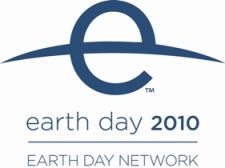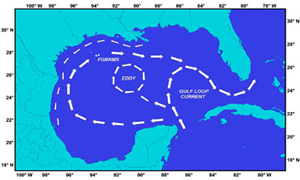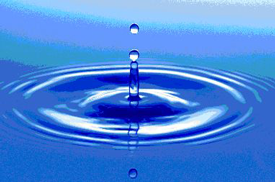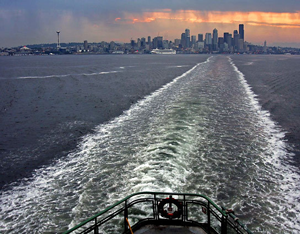 Nature is one of our greatest teachers, and water is one of the natural elements from which we can learn so much. In April, when there were abundant celebrations of the 40th Anniversary of Earth Day (April 22), many places observed water conservation month. The greatest of earth’s elements, covering almost three-quarters of the planet, is water. But did you know that nearly 97% of the world’s water is salty or otherwise polluted and undrinkable. Another 2% is locked in ice caps and glaciers. Only 1% of the Earth’s water can be used for all agricultural, residential, manufacturing, community and personal needs! By 2050, a third of the people on Earth may lack a clean, secure source of water. Want to learn more about freshwater resources and how they are used to feed, power, and sustain all life; and how the forces of technology, climate, human nature, and policy create challenges and drive solutions for a sustainable planet? Check out National Geographic’s great resource.
Nature is one of our greatest teachers, and water is one of the natural elements from which we can learn so much. In April, when there were abundant celebrations of the 40th Anniversary of Earth Day (April 22), many places observed water conservation month. The greatest of earth’s elements, covering almost three-quarters of the planet, is water. But did you know that nearly 97% of the world’s water is salty or otherwise polluted and undrinkable. Another 2% is locked in ice caps and glaciers. Only 1% of the Earth’s water can be used for all agricultural, residential, manufacturing, community and personal needs! By 2050, a third of the people on Earth may lack a clean, secure source of water. Want to learn more about freshwater resources and how they are used to feed, power, and sustain all life; and how the forces of technology, climate, human nature, and policy create challenges and drive solutions for a sustainable planet? Check out National Geographic’s great resource.
Like the earth, the human body is approximately three quarters water, with a similar salinity content and pH (acidity) level; and water is quite literally our life blood. We require fresh water to live, and really clean fresh water to maintain health. Learn more about the healthiest form of drinking water here.
There are many lessons in all that. Likewise, many legacy projects involving water could be undertaken to make a positive difference – cleaning it up, preserving its flow, creating access to it, using it for fuel as “HHO” (also called hydrogen on demand used to improve the poor efficiency of fossil fuel burning engines), developing it to generate electricity. You can consider how you might develop or support one of those projects. In the meanwhile, let’s explore why you might want to by examining this important element, and what more it has to teach us.
Water is magical. Two parts hydrogen and one part oxygen, it is amazingly malleable. It can exist in solid, liquid or gaseous forms. Its atoms can be separated by electrolysis: the hydrogen stored in water can then be used as a fuel source for energy, and the oxygen can be used to keep living creatures alive. Those H2O molecules in our oceans, rivers and lakes combine with the increasing amounts of carbon dioxide in the atmosphere, in an effort to modify that and protect us, producing carbonic acid which is increasing the acidity of the oceans and negatively affecting ocean life.
Water is powerful, an attribute we can embody when we remember that power is best defined as ‘the ability to do’ – to get things done. Water does have the ability to wear away rock and soil, shape coastlines and rivers – and tear things down, as do we. The movement of tides and waves and waterfalls has the ability to produce electrical power, and we can likewise be constructive instead. Water hydrates our bodies, giving us the energy and power to do just that.
Water makes ripples and waves – including storm surge and tidal waves or tsunamis. As fluid, water-filled bodies, we too can make waves and make change. And we must take care that the ripples we cause are not damaging.
Water will also completely support us, and can produce a very relaxed state. Most of us are buoyant in the water, or can be by virtue of an air mat or a boat. The sound of water lapping up of the edge of your body, mat or boat, like water flowing in a fountain, can be incredibly soothing. This is nature’s reminder to relax and enjoy, to surround yourself with support and extend the same to others.
Water flows; it teaches us to be fluid and flow, too. To move, change, let go. For centuries, humans have observed that “nature abhors a vaccum.” This idiom expresses the idea that empty or unfilled spaces are unnatural as they go against the laws of nature and physics. So we need not fear letting go – open up your tightly clenched fists holding on to anything, and something will eventually flow in to fill your open palms. There is no scarcity, there is always more flowing in from the ocean of abundance.
In its planetary flow, water’s movement produces gyres that can form and trap debris, as the Pacific Gyres – also known as the “Great Pacific Garbage Patch” – illustrate. Here’s a picture of that – the yellow dots represent the trash, much of it plastics trapped in the largest landfills on the planet, located in the Pacific Ocean – the very water that is our lifeblood. This reminds us to clean out our own gyres, formed by our own personal tornadoes, from time to time – if not also to be gentle with the environments that support us and keep them clean and healthy.
Water connects us and reminds us of the importance to maintain our connectivity. The Gulf of Mexico illustrates. Fed by headwaters of the Mississippi way up in Minnesota, that river carries sediment and agricultural run off along its entire route southward through the United States. Entering the Gulf of Mexico south of New Orleans, Louisiana, it meets the Gulf Loop Current. See a moving graphic representation of this map here. Looks like blood flowing through arteries and veins, doesn’t it?
 That current, fed by water flowing north through the Yucatan Channel between Cuba and the Yucatan Peninsula of Mexico, can flow northward along the Texas coast, eventually curving east and south along Florida’s coast or it can turn sharply east – in either case exiting through the Straits of Florida (between the Florida peninsula and Cuba) to meet up with the Gulf Stream of the Atlantic carrying warm Gulf and Caribbean waters to the Mediterranean and Europe. This flow of water brings animal larvae, plant spores and other imports from the south, which probably accounts for the many Caribbean species found in the northern Gulf of Mexico. Similarly, this current can pick up the same sorts of ‘passengers’ from the northern Gulf (and the upstream Mississippi River) to deliver along its route back to the Caribbean and Atlantic.
That current, fed by water flowing north through the Yucatan Channel between Cuba and the Yucatan Peninsula of Mexico, can flow northward along the Texas coast, eventually curving east and south along Florida’s coast or it can turn sharply east – in either case exiting through the Straits of Florida (between the Florida peninsula and Cuba) to meet up with the Gulf Stream of the Atlantic carrying warm Gulf and Caribbean waters to the Mediterranean and Europe. This flow of water brings animal larvae, plant spores and other imports from the south, which probably accounts for the many Caribbean species found in the northern Gulf of Mexico. Similarly, this current can pick up the same sorts of ‘passengers’ from the northern Gulf (and the upstream Mississippi River) to deliver along its route back to the Caribbean and Atlantic.
All these places are connected as we are connected to each other and our world. When asked during end of life planning where she wanted her cremains scattered, an elderly woman remarked that she’d like a few of her ashes dropped in a nearby river, thus ensuring she’d see parts of the world she never had a chance to visit.
Water that does not flow becomes stagnant and holding on to anything for too long can make us stagnant, too. Better to dance like the waves. The importance of flow to the earth’s water (and, metaphorically, to us) is illustrated by contrasting the Red Sea and the Dead Sea.
The Red Sea is a seawater inlet of the Indian Ocean, separating Africa and Asia – with Saudi Arabia to the east and Eqypt and Sudan to the west. The Red Sea’s flow is through the Gulf of Suez and the Suez Canal at the north (into the Mediterranean Sea) and through the Gulf of Aden in the south and out into the Indian Ocean. Because of that flow, the Red Sea is a rich and diverse ecosystem with more than 1200 species of fish, about 10% of which are found nowhere else. This rich diversity is supported by about 1,200 miles of coral reef extending along its coastline, fragile living structures that are 5000–7000 years old, along with other rich marine habitats including sea grass beds, salt pans, mangroves and salt marshes. That flow supports great life making the area sometimes called the Red Sea Riviera a great attraction for snorkelers, scuba divers and other visitors.
Contrast that with the Dead Sea to the north. The Jordan River rises from several sources, mainly the mountains in Syria, and flows down through the Jordan Valley with Jordan to the east and Israel to the west. In the Jordan Valley, fertile soils and a mild climate make the agricultural region the food bowl of Jordan. The river flows into Lake Tiberias (the Sea of Galilee), almost 700 feet below sea level finally draining into the landlocked Dead Sea which, at approximately 1,335 feet below sea level, is the lowest point on earth. With no outlet to the sea – no flow – intense evaporation concentrates its mineral salts and produces a hypersaline solution, about 8 times saltier than the world’s oceans. This lack of flow thus supports no indigenous plant or animal life.
Consistent with this principle of flow, water reminds us that even a drop produces many ripples, which can have a magnified multitude of effects. We are those drops. As Mother Teresa tells us:

“We ourselves feel that what we are doing is just a drop in the ocean. But the ocean would be less because of that missing drop.”
 Thus, water reminds us to keep moving and affecting our world, and that each one of us is important to the world. That includes the unique being that you are. Keep flowing, connecting with others, and making waves and ripples with a conscious focus on your unique purpose, and you will make important differences that add up to your life’s legacy. Maybe you’ll even choose to create something tangible and lasting to give to the world and leave for generations to come.
Thus, water reminds us to keep moving and affecting our world, and that each one of us is important to the world. That includes the unique being that you are. Keep flowing, connecting with others, and making waves and ripples with a conscious focus on your unique purpose, and you will make important differences that add up to your life’s legacy. Maybe you’ll even choose to create something tangible and lasting to give to the world and leave for generations to come.
What beauty will you leave in your wake? (DMG)

Interesting and informative article, Dolly. It brings into focus what a wide-spread impact some of our smallest decisions can have, especially when repeated.
Thanks Debra. Interestingly, several of the replies I’ve gotten to this article came from folks in the Houston area. Something’s going on there with natural resources management – particularly water – so these thoughts resonate. I guess after a long period of drought, people are glad to see the rain again, and are thankful and mindful of the need to revere and protect it. That’s good. That sense of reverence is one I remember well from living in Texas, so I’m glad to see it alive and well when it comes to environmental issues. I understand Texas is also working to lead the way in wind energy generation technology. That’s so great!
I so agree with you. We humans can do so much. And when each of us adds just a little bit to the effort the collective result – and the synergy that occurs from it — can be truly amazing.
Cheers, Dolly